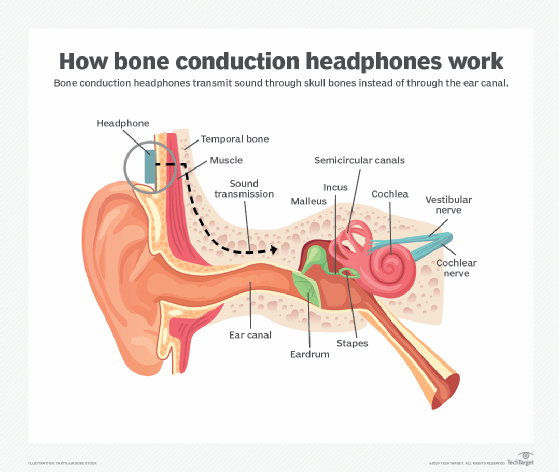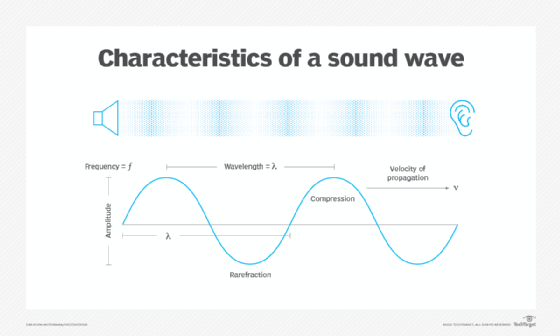A-weighted decibel (dBA or dB(A))
What is an A-weighted decibel (dBA or dB(A))?
A-weighted decibel (dBA or dB(A)) is an expression of the relative loudness of sounds as perceived by the human ear. A-weighting gives more value to frequencies in the middle of human hearing and less value to frequencies at the edges as compared to a flat audio decibel measurement. A-weighting is the standard for determining hearing damage and noise pollution. A-weighting is the most common, but other weighting systems exist. The most common are A, C and Z, or zero.
The sound pressure level, historically called the decibel (dB), is the absolute amount of pressure change exerted in the air by a sound. Human hearing is not equally sensitive to all sound frequencies. People can hear between 20 hertz and 20 kilohertz (kHz), but it is much more sensitive to frequencies in the 250-5,000 Hz range. Sound measurement equipment, such as a microphone, would hear all frequencies equally in decibels. A-weighting the measurements from a sound meter gives more value to where the ear is more sensitive and less value to frequencies that the ear is not as sensitive to. Most modern sound meters automatically convert to A-weighted decibels. A-weighted decibels are primarily designed for use with a pure frequency tone but are generally used for all noise measurements.
What are A-weighted decibels used for?
Human hearing is influenced by many physical factors. The shape of the ear and size of the ear canal shape and direct the sound waves to the eardrum. The head and torso also influence the sound waves. The eardrum transfers the wave to the cochlea, which translates the waves into nerve signals the brain can process. The cochlea is a spiral or logarithmic shape and is only sensitive to certain frequencies.

A-weighted decibels are used when human hearing is affected. They are used for sound levels, noise pollution and equipment noise levels.
It is generally accepted that exposure to noise over 85 dBA for longer than eight hours can cause hearing damage. Even momentary exposure to noise over 140 dBA causes pain and hearing damage.
Loud equipment may be labeled with its typical operating sound level in A-weighted decibels. They may require the use of hearing protection.
Typical noise levels
- 20 dBA: whisper, quiet room
- 30 dBA: soft music
- 40 dBA: home computer fan
- 50 dBA: home air conditioning, light outside traffic
- 60 dBA: normal conversation
- 70 dBA: flushing toilet, home dishwasher, noisy room
- 80 dBA: server room, alarm clock, inside an airplane
- 85 dBA: accepted level of hearing damage over time
- 90 dBA: lawnmower, hair dryer, blender
- 100 dBA: riding a motorcycle, construction site
- 110 dBA: rock concert, jackhammer
- 135 dBA: air raid siren
- 140 dBA: pain threshold, serious hearing damage possible, jet engine
- 150 dBA: handgun
- 180 dBA: rocket launch

History of A-weighted decibels
Research in perceptive loudness was started in 1933 by the team of Harvey Fletcher and Wilden Munson. Their equal loudness curves were published as an American National Standards Institute standard in 1936. Their work was later updated, and new curves were released as International Organization for Standardization (ISO) 226. The latest standard is ISO 226:2003.
International Electrotechnical Commission 61672:2003 defines the electronics curves used in sound meters. All modern sound meters can provide A-weighted decibel and C-weighted decibel (dBC) measurements.
There is some debate relating to the accuracy of the A-weighted system's accuracy compared to human hearing and in complex noises. Regardless, many years of observational data have confirmed its usefulness for environmental noise and predicting hearing damage.
C-weighted decibels and Z-weighted decibels
A-weighted decibels are most useful in normal environments. Beyond about 100 dB, the ear's frequency sensitivity changes. C-weighted decibels are a flatter curve than A-weighted decibels. It is used for extremely loud or noisy environments, such as in music performances or places with a lot of traveling low (bass) noise.
Z-weighted decibels are a zero curve. No accounting for the human ear is applied. It only defines that the range is from 10 Hz to 20 kHz ± 1.5 dB. It replaced older flat, linear or unweighted noise measurements that did not define a frequency range to measure over. It may be used for a peak measurement.
See also: bone conduction headphones, dynamic range, saser and audio frequency.
